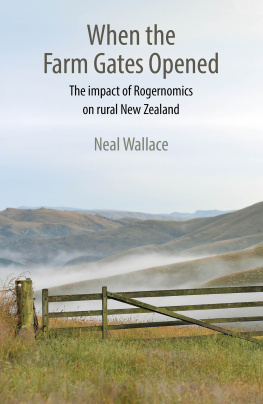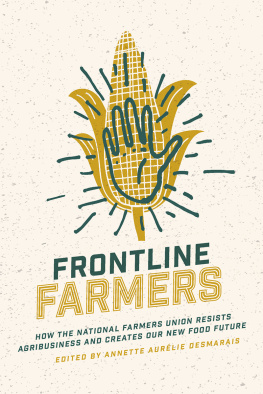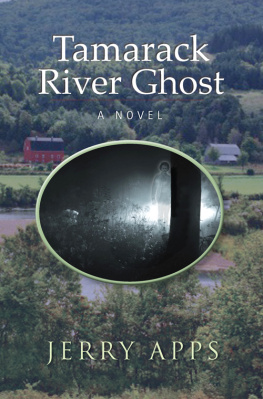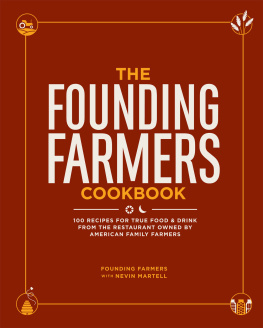Published by Louisiana State University Press
Copyright 2016 by Louisiana State University Press
All rights reserved
Manufactured in the United States of America
First printing
Designer: Barbara Neely Bourgoyne
Typeface: Ingeborg
Printer and binder: Maple Press (digital)
Library of Congress Cataloging-in-Publication Data
Names: Berlage, Nancy K., 1966 author.
Title: Farmers helping farmers : the rise of the farm and home bureaus, 19141935 / Nancy K. Berlage.
Description: Baton Rouge : Louisiana State University Press, [2016] Includes bibliographical references and index.
Identifiers: LCCN 2015043013| ISBN 978-0-8071-6330-6 (cloth : alk. paper) | ISBN 978-0-8071-6331-3 (pdf) | ISBN 978-0-8071-6332-0 (epub) | ISBN 978-0-8071-6333-7 (mobi)
Subjects: LCSH: AgricultureUnited StatesSocieties, etc.History20th century. | Agriculture, CooperativeUnited StatesHistory20th century. | AgricultureUnited StatesHistory20th century.
Classification: LCC HD1484 .B47 2016 | DDC 334.6830973dc23
LC record available at http://lccn.loc.gov/2015043013
The paper in this book meets the guidelines for permanence and durability of the Committee on Production Guidelines for Book Longevity of the Council on Library Resources.

CONTENTS
CHAPTER 1
Organizational Structure: The Rise of the Local Farm Bureau
CHAPTER 2
Organizational Strategy: Economic, Political, and Social Functions
CHAPTER 3
Science, Cultural Authority, and the Farm Bureau: Bovine Tuberculosis
CHAPTER 4
Home Bureaus and the Sciences of Separate Spheres
CHAPTER 5
Women and the Agricultural Occupation
CHAPTER 6
Reproducing the Farm Family: Youth Clubs, Gender, and Science
ACKNOWLEDGMENTS
I am grateful to the many people who helped make this book possible, starting with my colleagues at Texas State University who saw me through the final stages of publication. My department chair, Mary Brennan, offered tremendous support throughout the process, Rebecca Montgomery and Jimmy McWilliams offered insights on material, and the rest of my departmental colleagues were helpful.
Several scholars shared their expertise on specific topics. Early on Anne Effland, Margaret Rossiter, and Doug Hurt imparted their solid understanding of agricultural development, science, and public policy. JoAnne Brown generously shared her work and sharp insights on tuberculosis and culture. Also special thanks to Elaine Frantz Parsons for talking temperance, culture, and cows; to Marv Bergman, Denise Dial, Douglas Helms, Larry Landis, and Margaret Rossiter for information in soil science history; and to Gould Colman for insight on New York agriculture. Debra Reid, Chris Colvin, Eoin McLaughlin, Richard Hoyle, and Andrs Vri gave invaluable advice on the economic history of cooperatives.
While preparing the manuscript, I benefited immensely from the comments of multiple individuals. Larry Peskin offered valuable suggestions on the entire work, and Alan Olmstead and Paul Rhode kindly provided suggestions on the bovine tuberculosis material. Keir Waddington, Elizabeth Fee, and Rima Apple were generous with their time in reading book sections and in offering their thoughts at the Health in History Anglo-American Conference in London. The participants in the National Science Foundation Workshop on Race, Gender, and Sexuality in Law and American Political Development at Ohio State University helped me better understand the intertwined relationship between gender identity and the development of the American state.
I am indebted to several institutions for providing essential funding and support: the Texas State University Research Enhancement Program; the Economic History Association; the Frederick Jackson Turner Society and the Womens Studies Department/Ford Foundation Travel Grants at Johns Hopkins University; the Fellowship in Home Economics History program of the College of Human Ecology of the State University of New York and Mann Library, Cornell University; the Rockefeller Archives Center; the Institute for Applied Economics, Global Health, and the Study of Business Enterprise at Johns Hopkins University; and Dorothy Ross generously shared her Spencer Foundation grant.
My work could not have gone forward without the wonderful curatorial, library, and archival staff at Cornell University, Iowa State University, the Iowa State Historical Society, University of Illinois, National Agricultural Library, US National Archives, McLean County Historical Society, and other institutions. I am deeply grateful to the individual farm bureau offices and extension service offices that allowed this outsider access to their treasures, especially those in Whiteside, Jo Daviess, and Champaign counties.
Long ago, the history faculty at Johns Hopkins University opened up the new, exciting world that led to this book. Louis Galambos, with his brilliance, wisdom, and unflagging encouragement, has continued to support me over the years. Toby Ditz and Ron Walters also provided help and inspiration, and Bob Forster and Bill Rowe introduced me to comparative rural history. I could not have moved ahead without the fine suggestions of the gender history writing group led by Toby Ditz. Two other scholars, Barry Karl and David Greenstone of the University of Chicago, first sparked my interest in the farm bureau and provided priceless mentorship.
I am grateful to Margaret Rung for her professional and personal support and to Carolyn Eastman for her knowledge and friendship. Thanks to Alfred Goldberg, Stuart Rochester, and Diane Putney at the Historical Office of the Secretary of Defense; I learned from their wealth of writing and editing knowledge.
I wish to thank the Louisiana State University Press and staff for their hard work, especially Alisa Plant, my incredible editor, who offered precious encouragement and knowledgeable support for the duration, along with Neal Novak, Katherine Barton, and Stan Ivester. The astute, discerning comments generated through the presss anonymous peer review process vastly improved the manuscript. Princeton University Press and the Agricultural History journal graciously allowed me to draw on some of my published material.
I am appreciative of the contributions made by my family, Mom, Teri, Beth, Brandi, and Nancy, who never wavered in their care. Dad and Cheryl, I wish you were still here to see the book published. Also thanks to the many relatives who shared their knowledge of contemporary farming. And cheers to my four-legged friends for making me laugh while writing.
And finally, I thank Chris Dachi with all my heart: there are no words to describe the depth of his intellectual contributions and moral support. This books for you.
FARMERS HELPING FARMERS
INTRODUCTION

When close to completing this book, I belatedly discovered that some of my relatives had been strong supporters of the farm bureau movement during its early days. I stumbled across an article, complete with photos, about my great-uncles family and their farm printed in the newspaper published by the farm bureau federation in Illinois. The article was particularly interesting because it featured the farm just up the gravel road from where I grew up. Sitting and writing a thousand miles distant, I could picture the farm and house with its great oaks sitting atop the steep hill across the little valley: I had looked at that scene every day from my bedroom window. Growing up I vaguely comprehended that the land had once belonged to kin; my father had mentioned it when we passed the crumbling foundations of the one-room school that he had attended, which sat by the road across from the farms dirt lane. I did not know, however, that for decades the farm had been the site of the annual sheep days initiated by my great-uncle Otto and co-sponsored by the county farm bureau. Apparently in those times it was quite the event, even attracting attention from as far away as Australia. Still, the emphasis on sheep puzzled me since I knew few people in the area who raised them; it seemed to hearken to an earlier time of farm diversification, for by the early twenty-first century the farms in Jo Daviess County, Illinois, despite inhospitable rocky slopes, specialized in corn, soybeans, and alfalfa, with dwindling numbers of dairy and hogs. Yet family documents confirmed the information presented in the article. I also found an old photograph of my grandparents standing in front of my hometowns new farm bureau office, around 1935, and some later articles about the farm bureau exchange student from South America that my by-then widowed grandmother hosted. But the information about the sheep days most captured my attention because it encapsulated many of the themes that I discuss in this study: the farm bureaus stress on preserving farm family life, improving farms and homes, and the influence specialization had on production and farm life. In this case, my great-uncle specialized inand apparently favoredsheep.










